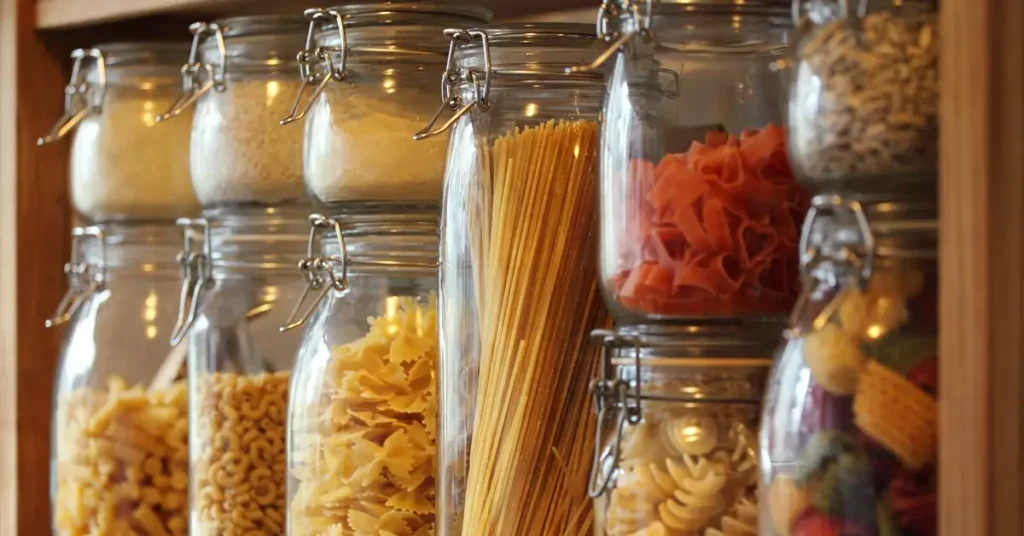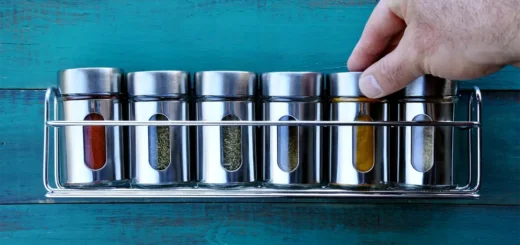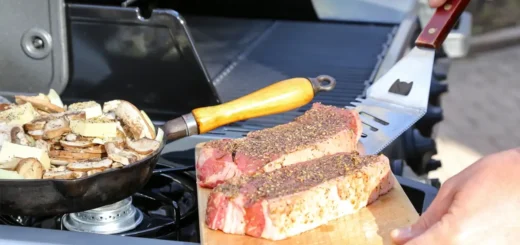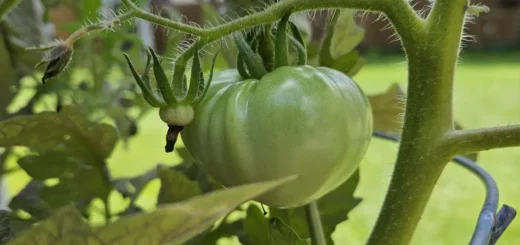Essential Food and Food Storage for a Southern Prepper Pantry

In the unpredictable world that we live in, it’s essential to be prepared for any emergency, including natural disasters, severe weather events, economic downturns, and everyday life.
In this Southern Prepper post, we’ll delve into a topic that holds a high significance for our Southern readers: essential food and storage.
We know that the Southern region has its unique climate and dietary preferences, so let’s explore the specific food items that are well-suited for our region and the importance of incorporating regional flavors and staple ingredients into your emergency food supply.
Table of Contents
Understanding Climate Change in the Southeastern United States: Impacts on Rainfall, Temperature, and Crop Yields
The Southeastern United States continues to experience significant changes in its climate, and a study published in Scientific Reports from October 2022 provides some valuable insights into this weather change. The research analyzed rainfall patterns, temperature fluctuations, and their impact on crop yields in the region.
Overall, the research and study concluded that climate change has not had a net effect on wheat yields but has led to a significant increase of 13% in corn yields and 14.10% in rice yields in the Southeast.
The study’s findings highlight the need for individuals in the Southern US to adjust their gardening and farming practices to align with changing climate conditions. This emphasis on regional and local food production can have mixed effects on food costs. On one hand, increased regional production can potentially lead to improved availability and reduced transportation costs, which may stabilize or lower prices. On the other hand, the initial investments, infrastructure development, and transition costs associated with adapting to climate change could have short-term implications for food costs.
While this study does provide helpful insights, climate change is a complex and dynamic phenomenon. Overall, the study suggests that climate change can have significant implications for crop yields, which may indirectly influence food costs.
Adapting agricultural practices, fostering resilient food systems, and considering local and regional production can help mitigate some of these impacts and contribute to a more stable and affordable food supply in the southeastern United States.
Prepping Tip: Getting Started with Prepping? Take It One Step at a Time!
If you’re new to prepping and looking to build up your pantry supplies, it’s important to approach it gradually and thoughtfully. Instead of rushing to buy bulk quantities of a single item, like three cases of green beans at Sam’s Club, it’s more practical and manageable to start small.
Next time you’re at the store, consider purchasing just one additional item to add to your pantry stock. For example, if you notice you’re running low on baked beans, grab two cans instead of one. By doing so, you can start building a foundation for your emergency food supply without overwhelming your budget or storage space.
Once you’ve added that extra can of baked beans to your pantry, make a note to replenish it during your next grocery shopping trip. This way, you can maintain a rotation system where you always have at least one can of baked beans in your pantry. By consistently restocking items as you use them, you ensure a continuous supply and reduce the risk of running out during an emergency.
Remember, the key is to approach prepping gradually and systematically. Over time, your pantry will gradually grow, and you’ll gain confidence in your preparedness efforts. Starting small allows you to adapt your prepping strategy based on your needs and preferences while keeping the process manageable and sustainable.
So, take that first step, and the next time you’re at the store, add just one extra item to your cart. Whether it’s an additional can of beans or any other essential food item, every small step counts towards building a well-stocked and reliable pantry for your prepping journey.
Climate-Adapted Food Items
When it comes to building your prepper pantry in the Southern regions, it’s important to consider and understand the climate and its impact on food storage. High humidity, heat, climate change, and food costs are factors that should guide your choices.
Canned Goods
When it comes to building your prepper pantry, canned goods are an invaluable resource. They provide convenience and a long shelf life. While it’s ideal to store canned goods in a cool, dry place, they can generally withstand a range of temperatures and humidity levels.
Temperature
Canned foods should be stored at a temperature between 50°F and 70°F for optimal quality and safety. It’s important to avoid extreme temperatures, such as freezing or prolonged exposure to high heat. Freezing temperatures can cause the cans to expand and potentially lead to damage or spoilage. On the other hand, excessively high temperatures can affect the food quality, texture, and nutrient content over time.
Humidity
Canned goods are generally resistant to humidity and can tolerate normal humidity levels found in homes. However, it’s advisable to store them in a location where humidity levels are moderate, preferably below 75%. High humidity, especially in combination with elevated temperatures, may increase the risk of corrosion and potential damage to the cans’ integrity, compromising the safety of the food inside.
While canned foods can tolerate moderate variations in temperature and humidity, it’s still highly suggested to inspect your cans regularly for signs of damage or deterioration.
Throw away any cans that show signs of bulging, dents, leaks, or unusual odors, as these can indicate spoilage or compromised food safety.
Let’s explore some essential canned goods to consider stocking up on:
Canned Vegetables
Having a variety of canned vegetables in your pantry ensures you maintain a well-rounded diet during emergencies. Stock up on staples (that your family will eat) don’t buy a whole case of peas if you can’t stand them.
These vegetables are not only versatile but also retain their nutritional value and flavor when properly canned:
- corn
- green beans
- lima beans
- peas
- carrots
- tomatoes
Canned Fruits
Canned fruits offer a delightful burst of sweetness and can provide a much-needed pick-me-up during emergencies.
Check that you have an assortment of fruit options packed in their natural juices or light syrup to add a touch of refreshment to your meals or enjoy them as a standalone treat.
- pineapple chunks
- peaches
- pears
- mandarin oranges
Canned Soups and Stews
During emergencies, canned soups and stews can be a lifesaver. They offer a quick and easy way to provide nourishment and comfort.
- chicken noodle soup
- vegetable soup
- beef stew
Look for low-sodium options and check the expiration dates regularly to ensure the freshness of your supply.
Canned Meats
Having a variety of canned meats on hand can significantly enhance the protein content of your emergency meals. Popular options include
- canned tuna
- chicken
- ham
- salmon
These meats are pre-cooked and can be used in sandwiches, salads, or added to pasta dishes, providing sustenance and flavor during trying times.
Rotate your canned goods periodically to maintain freshness and check for any signs of damage or bulging cans. Don’t forget your manual can opener!
By stocking a diverse selection of canned goods in your prepper pantry, you can ensure a well-balanced diet even in a crisis. These shelf-stable options offer convenience and longevity, making them a great investment and resource for any emergency situation.
Rice and Pasta
Rice and pasta are two versatile staples that have long been cherished in Southern cuisine. They provide sustenance and comfort but also offer a multitude of culinary possibilities during emergency situations. Let’s explore the different types and considerations for incorporating rice and pasta into your prepper pantry.
Rice
Rice is a pantry essential that serves as a reliable source of carbohydrates and pairs well with a variety of flavors. In the Southern region, two popular types of rice are commonly used:
White Rice
White rice is a staple in many Southern households due to its versatility and longer shelf life compared to brown rice. It can be used as a side dish, a base for hearty casseroles, or even transformed into creamy rice pudding for a comforting dessert. Store different varieties such as long-grain, medium-grain, or jasmine rice based on your family’s preferences.
Wild Rice
While not technically a true rice, wild rice is a flavorful and nutritious option worth considering for your prepper pantry. It has a nutty taste and can be mixed with other rice varieties to create delicious pilafs or used as a stuffing in poultry dishes.
Rice Storage
Long-term storage of rice is an essential consideration for building a well-prepared prepper pantry. Here are some key factors and methods to ensure the long-term storage of rice:
Choose the Right Rice Variety – When it comes to long-term storage, certain rice varieties are better suited than others. White rice, particularly long-grain varieties such as jasmine, basmati, or regular long-grain rice, has a longer shelf life compared to brown rice due to its lower oil content. The lower oil content helps to slow down the oxidation process, extending the rice’s storage viability.
Packaging and Containers – Proper packaging and suitable containers are crucial for preserving the quality and freshness of stored rice.
These are the most popular options for long-term storage of rice:
- Mylar Bags: Mylar bags are excellent for long-term storage as they provide a barrier against oxygen, moisture, pests, and light. Place the rice in clean, food-grade Mylar bags, and use an oxygen absorber to remove any residual oxygen. Seal the bags tightly using a heat sealer or by ironing the edges shut.
- Food-Grade Buckets: Another option is to store rice in food-grade plastic buckets with airtight lids. Line the buckets with Mylar bags and place the rice inside before sealing. This double-layered protection helps safeguard the rice from moisture and pests.
- Oxygen Absorbers: Including oxygen absorbers in your rice storage containers is crucial to prevent the growth of mold, bacteria, or insects. Oxygen absorbers remove any residual oxygen that may be present, maintaining a low-oxygen environment within the packaging. Use appropriate-sized oxygen absorbers based on the volume of rice and the container size.
Storage Conditions – To ensure optimal longevity, rice should be stored in a cool, dry, and dark environment. Aim for a temperature between 50°F and 70°F to minimize the potential for spoilage. Avoid exposure to sunlight, as it can degrade the quality of the rice. Additionally, maintaining a humidity level below 75% helps prevent moisture absorption and the growth of mold or mildew.
Rotation and Inspection – While properly stored rice can have a long shelf life, it’s important to practice regular rotation and inspection. Use and rotate your rice supply by eating and replacing older stock to ensure freshness. Regularly inspect the stored rice for any signs of pests, unusual odors, or discoloration. If you notice any issues, discard the affected rice immediately.
By following this outline for long-term rice storage, you can feel confident that your food pantry is well-stocked with a reliable source of variety and nutrients. Label your storage containers with the date of storage to help with rotation and use older stock first. First in, first out!
Pasta
Pasta is another pantry staple that offers versatility and comfort in times of need. It can be cooked quickly and combined with various ingredients to create satisfying meals.
Here are a few pasta options that are great for storage:
Macaroni
Macaroni is a classic choice for Southern comfort food. It’s perfect for making creamy macaroni and cheese, hearty pasta salads, or flavorful casseroles.
Spaghetti
Spaghetti is a versatile pasta that pairs well with a variety of sauces, from traditional marinara to rich meat-based sauces. Keep a supply of spaghetti noodles in your pantry to whip up quick and satisfying meals.
Rotini
Rotini is a spiral-shaped pasta that can hold sauces and flavors beautifully. It’s an excellent choice for pasta salads or dishes with chunky sauces that can cling to its ridges.
Whole Grain Pasta
Try adding whole grain pasta to your pantry. Whole grain pasta retains the nutrient-rich components of the entire grain, providing more vitamins, minerals, and fiber compared to refined pasta. It contains higher levels of B vitamins, vitamin E, magnesium, and fiber, contributing to a more nutritious diet.
Whole grain pasta generally has a lower glycemic index (GI) compared to refined pasta. The lower GI means it causes a slower and more gradual rise in blood sugar levels, providing sustained energy and preventing sudden spikes and crashes. This can be particularly beneficial for individuals with diabetes or those aiming to regulate their blood sugar levels.
Like rice, store your pasta in airtight containers or sealed bags to protect it from moisture and pests. Include different shapes, colors, and sizes of pasta to add variety to your emergency meal options.
Dried Beans and Legumes
Dried beans and legumes are an essential component of a well-stocked Southern prepper pantry. They are not only versatile and delicious but also packed with nutrients, making them an excellent addition to your emergency food supply. Here’s why you should consider incorporating dried beans and legumes into your prepper pantry.
Nutritional Powerhouses – Dried beans and legumes are highly nutritious, providing a range of essential vitamins, minerals, and plant-based protein. They are rich in fiber, folate, iron, potassium, and magnesium, all of which contribute to a well-balanced diet. By including dried beans and legumes in your emergency food supply, you ensure a reliable source of essential nutrients even during challenging times.
Long Shelf Life – One of the significant advantages of dried beans and legumes is their extended shelf life. When properly stored in a cool, dry place, they can be safely stored for several years, making them an excellent option for long-term food storage. This extended shelf life ensures that you have a reliable and sustainable source of protein and nutrients in your prepper pantry.
Versatility in Cooking – Dried beans and legumes offer incredible versatility in the kitchen. They can be incorporated into a wide range of dishes, adding texture, flavor, and nutrition. From classic Southern favorites like red beans and rice or black-eyed peas to hearty stews, soups, and salads, the possibilities are endless. Experiment with different spices, herbs, and seasonings to create delicious and satisfying meals using dried beans and legumes.
Cost-Effective – Dried beans and legumes are an affordable source of protein compared to many other food options. They offer great value for money and can stretch your food budget while providing essential nutrients. By stocking your Southern prepper pantry with dried beans and legumes, you can ensure cost-effective meal options without compromising on quality or flavor.
Easy to Store and Prepare – Storing dried beans and legumes is relatively simple. Keep them in airtight containers or sealed Mylar bags to protect them from moisture, pests, and contaminants. Before cooking, rinse the beans or legumes thoroughly and soak them in water overnight or for several hours to rehydrate them. Then, cook them according to your preferred method, which may include stovetop simmering, pressure cooking, or using a slow cooker.
Rotate your stock and regularly check the quality of dried beans and legumes in your pantry. Throw away any beans that show signs of spoilage, such as mold, unusual odors, or insect infestation.
Regional Flavors and Staple Ingredients
One of the joys of Southern cuisine is the rich and vibrant flavors derived from regional ingredients. When preparing your emergency food supply, it’s essential to use these flavors to ensure a sense of familiarity and comfort.
Here are some favorite regional flavors and ingredients for your Southern pantry:
Hot Sauce and Spices: We love our hot sauce, and it’s a must-have in any pantry. Be sure to have a bottle on hand, whether it’s Louisiana-style hot sauce or a homemade hot sauce. Stock up on spices like paprika, cayenne pepper, and garlic powder to add that signature Southern kick to your meals.
Cornmeal and Flour: Cornmeal and flour are versatile ingredients used in many Southern dishes. Cornmeal is perfect for making cornbread, while flour is essential for baking biscuits and other Southern delicacies. Make sure to store them in airtight containers to maintain their freshness.
Canned Peaches and Sweet Tea: Southern summers wouldn’t be complete without the refreshing flavors of canned peaches and sweet tea. They provide a much-needed respite during hot days and offer a taste of home during emergencies.
Conclusion of Essential Food and Food Storage for a Southern Prepper Pantry
Building a prepper pantry for the Southern region requires careful consideration of the climate, dietary preferences, and regional flavors. By stocking up on climate-adapted food items like canned goods, rice, and beans, you can ensure the longevity and suitability of your emergency food supply. Incorporating regional flavors and staple ingredients such as spices, hot sauce, cornmeal, and sweet tea will provide a sense of comfort and familiarity when times get tough.
With rising food costs, climate change on crops, and natural disasters, preparation is key, and having a well-stocked pantry will give you peace of mind. Stay safe, stay prepared!
Our Top 20 Food Preps To Start Your Prepper Pantry
This section contains Amazon affiliate links:
- Bush’s Best Baked Beans, Country Style with Bacon and Brown Sugar, (12-Pack)
- Del Monte Canned Vegetables Variety Pack, Green Beans and Whole Kernel Corn, (6-Pack)
- Del Monte Canned Stewed Tomatoes with Basil, Garlic and Oregano, (12-Pack)
- StarKist Chunk White Tuna in Water, (4-Pack)
- Progresso Traditional, Chicken Noodle Soup, (4-Pack)
- Dinty Moore Beef Stew, 15 Ounce Can (4-Pack)
- Dole Fruit Bowls, Variety Pack, Peaches, Mandarin Oranges & Cherry Mixed Fruit, (12-Pack)
- Skippy Peanut Butter, (2-Pack)
- Uncle Ben’s Original Long Grain White Rice, 5 Lb. (2-Pack)
- Barilla Pasta Variety Pack (7-Pack)
- Quaker Chewy Lower Sugar Granola Bars, 3 Flavor Variety Pack, (58 Count)
- Silk Shelf-Stable Almond Milk, (6-Pack)
- Ragu Pasta Sauce, Old World Style Traditional (3-Pack)
- Frank’s Original Hot Sauce, (12 fl oz)
- Sue Bee Honey Regional Southeast USA, Strained, Unfiltered (24-Ounce)
- Good Seasons Mild Italian Dressing Mix,1 oz Packets, (4-Pack)
- Camellia Brand Dried Red Kidney Beans, 1 Pound (2-Pack)
- Gold Medal All Purpose Flour with Resealable Bag, 4.25 pounds (1-Pack)
- Betty Crocker Cornbread and Muffin Baking Mix, (9-Pack)
- Quaker Steel Cut Oatmeal, Variety Pack, (32-Count)
When building your pantry, consider incorporating a variety of food items to ensure a well-rounded supply. Gradually build up your stockpile, focusing on a balanced selection of proteins, carbohydrates, fruits, and vegetables.
Lastly, don’t forget to complement your pantry items with necessary cooking essentials like salt, pepper, spices, and cooking oil. Having a good supply of clean water is equally important for both drinking and food preparation during emergencies.
Prepping is a personal journey, so feel free to customize the list based on your family’s preferences and needs. Regularly evaluate and replenish your pantry items to ensure you’re always prepared for any situation.







